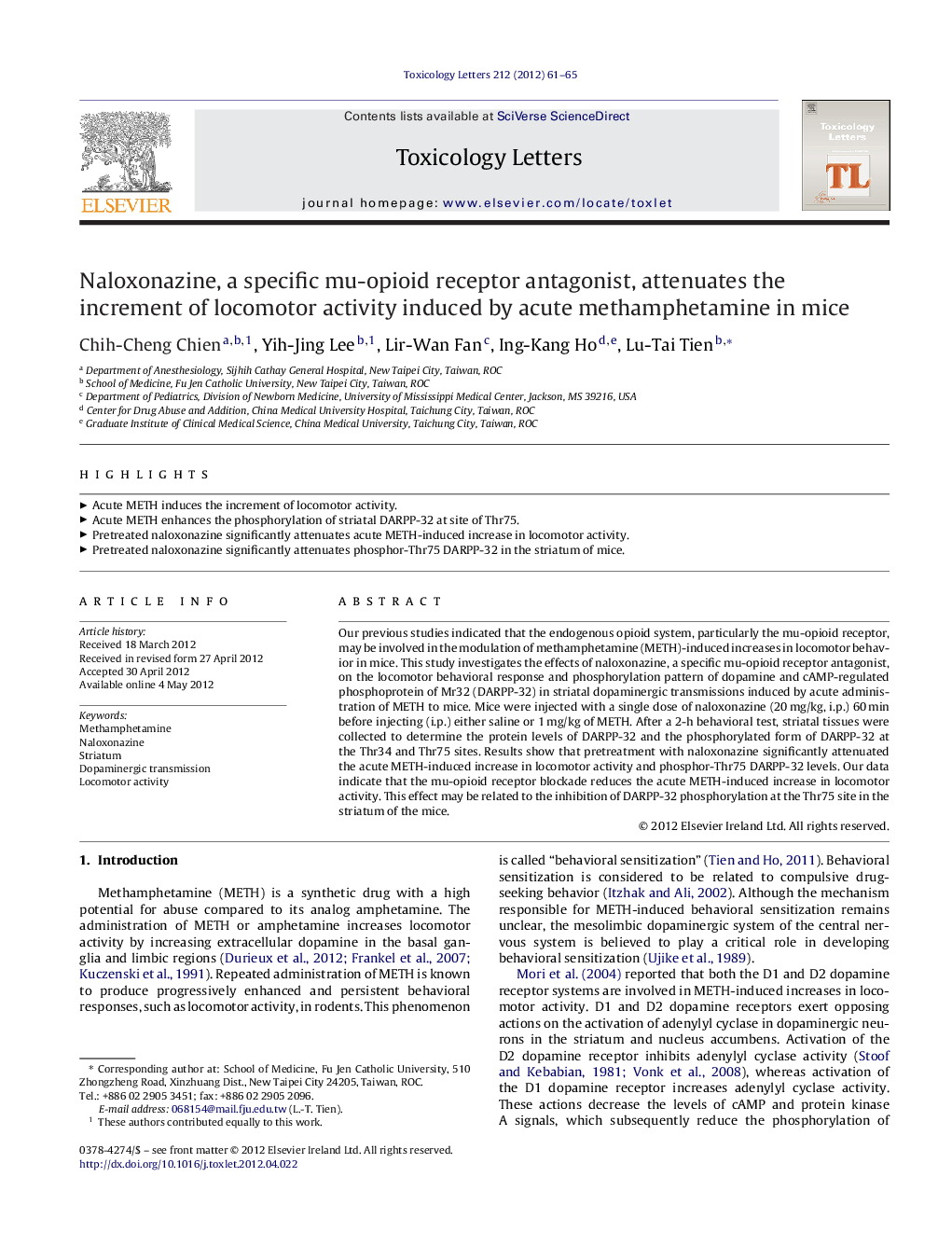| Article ID | Journal | Published Year | Pages | File Type |
|---|---|---|---|---|
| 2599605 | Toxicology Letters | 2012 | 5 Pages |
Our previous studies indicated that the endogenous opioid system, particularly the mu-opioid receptor, may be involved in the modulation of methamphetamine (METH)-induced increases in locomotor behavior in mice. This study investigates the effects of naloxonazine, a specific mu-opioid receptor antagonist, on the locomotor behavioral response and phosphorylation pattern of dopamine and cAMP-regulated phosphoprotein of Mr32 (DARPP-32) in striatal dopaminergic transmissions induced by acute administration of METH to mice. Mice were injected with a single dose of naloxonazine (20 mg/kg, i.p.) 60 min before injecting (i.p.) either saline or 1 mg/kg of METH. After a 2-h behavioral test, striatal tissues were collected to determine the protein levels of DARPP-32 and the phosphorylated form of DARPP-32 at the Thr34 and Thr75 sites. Results show that pretreatment with naloxonazine significantly attenuated the acute METH-induced increase in locomotor activity and phosphor-Thr75 DARPP-32 levels. Our data indicate that the mu-opioid receptor blockade reduces the acute METH-induced increase in locomotor activity. This effect may be related to the inhibition of DARPP-32 phosphorylation at the Thr75 site in the striatum of the mice.
► Acute METH induces the increment of locomotor activity. ► Acute METH enhances the phosphorylation of striatal DARPP-32 at site of Thr75. ► Pretreated naloxonazine significantly attenuates acute METH-induced increase in locomotor activity. ► Pretreated naloxonazine significantly attenuates phosphor-Thr75 DARPP-32 in the striatum of mice.
